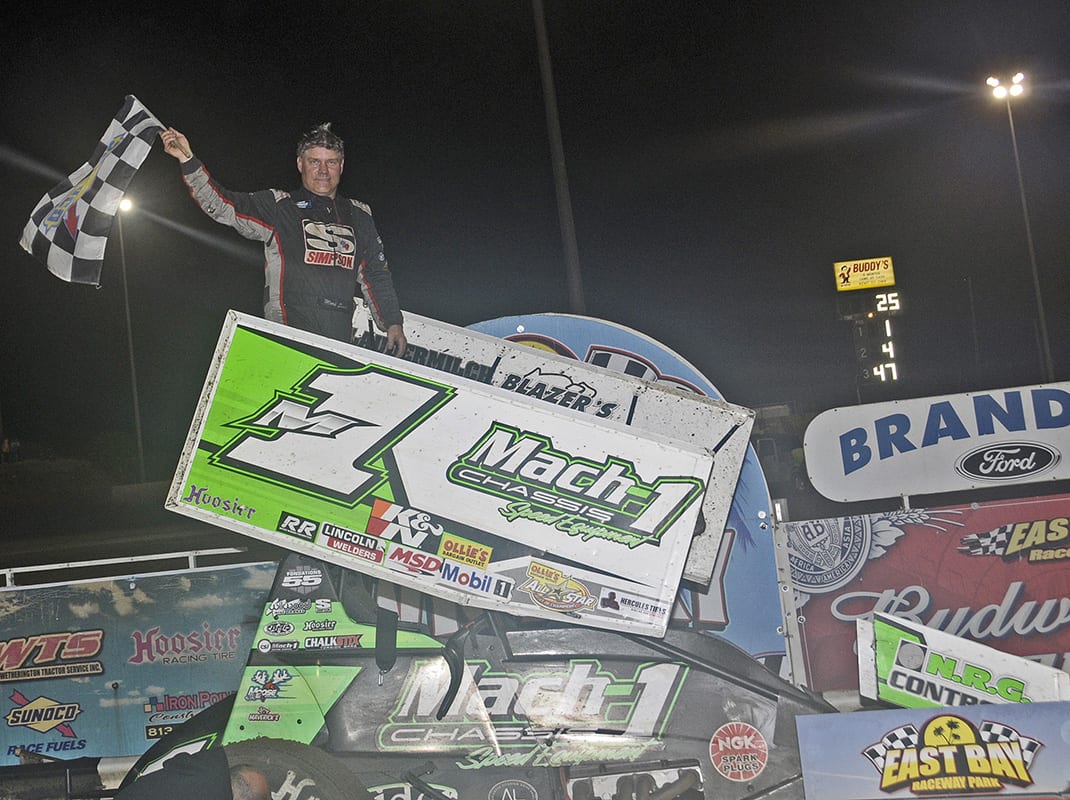“We partnered up with Jordan Anderson Racing and Niece Motorsports and did the Dirt Derby last year,” Smith said. “We’re working on stuff for this year, but this virus might have thrown a clinker to a bunch of it. Al Niece sponsored me for the Chili Bowl this year and would love to have me in his truck for Eldora. It all comes down to the funding.
“I thought I did pretty well (last year). I ran 15th and was on the lead lap. I figure that was a pretty good accomplishment for never driving anything like it. I’ve never sat on the left side of anything. The only thing that had fenders was a modified and that was only on the backside. It was quite a bit different to drive. You had to be so easy on the throttle and drive it so straight. Every time you gave it a little gas it’d spin out on you. I’d like to drive it on pavement. I think I’d be pretty successful.”
Although there have been forays into more than a half dozen different types of race cars, sprint car racing has remained Smith’s focus.
“I’ve been building cars for a long time,” he said. “Basically, the JEI chassis was called Outlaw Chassis, which started years ago when I worked for Shawn Keen. When he went out of business, Barry Jackson bought all the jigs and equipment from Shawn. Barry moved everything and I just followed the equipment. I built chassis called JEI. I left there and went to work for Zemco. I wasn’t allowed to build chassis, but I was able to repair them. I did that for three-and-a-half or four years. Then I decided I wanted to build cars on my own. I took the big step.”
Smith established Mach 1 Chassis in 2007 and added a partner in Brian Scandle, who is also the owner of the No. M1 sprint car that Smith pilots.
“I couldn’t do this without Brian,” Smith said. “I’m the main guy, but I have Jason Shultz. He’s my main fabricator. I’m on the phone a lot now. I’ll build shocks and take care of the speed shop part of it.”

As Smith and Scandle have developed Mach 1 Chassis into a formidable business throughout the last dozen-plus years, their sprint car team has been just as successful. A recent decision to focus on 360 competition has yielded double-digit wins on a regular basis.
“The 410s just got so expensive here locally in Pennsylvania because our tracks are so big,” Smith said. “It’s so expensive on the engines. With the 360s, we’re able to get twice the life or more out of the engines. That saves on the engine bills. It came down to an expense. You almost need NASCAR money to compete with those teams.
“On the smaller tracks with the 360s, you’re running about the same speed as a 410. The car is a little heavier. On the bigger tracks you see a big difference in speed. At home we’re a second to a second and a half off from a 410. With the shock technology these days and the engines, basically the 360s are probably where the 410s were in the mid-90s, late 90s, as far as what they are making as power.”
Tire rules have also played a big role in the decision for Smith to race in the South.
“It’s the closest racing that make sense for us because they do a lot of racing before we start around here,” he said in reference to running with the USCS series. “New York, I don’t go up there very often because they run a whole different tire deal and we already run two types of tires. It gets expensive. We can use some of the tires we run with the USCS and ASCS here at home. It’s a better mix. It’s a little closer than what I do down south, but the tire bill is what keeps me from going up there.”
Smith has found a main division that is fun and as cost effective as racing can be for a successful driver. He claims he doesn’t have a timeline for how long he will stay in the seat of a race car, but the determining factor will be whether he continues to have success.
“I want to stay competitive,” he said. “I think I can stay competitive for quite a while. If I see where I’m not getting quite the wins, I may back off and buy a fishing boat.”
Best of luck to the fish when that time arrives.
